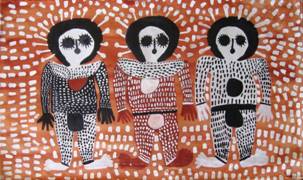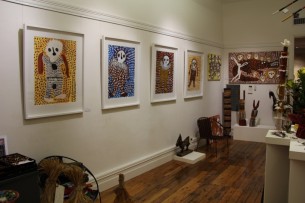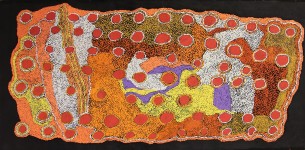First footprints was aired in four parts on the ABC recently. Â This remarkable documentary presents archaeological findings together with Indigenous knowledge covering the past 50,000 years on the Australian continent. Â Â It is available to watch on ABC TV iview and is highly recommended.
This fascinating series shows the arrival of the first people from the African continent to Australia and their remarkable adaptation and survival through the 25,000 years of mega fauna, an ice age which meant the loss of plants which in turn meant the loss of the mega fauna, and then an extremely long period of drought which created a vast desert across most of Australia bar the coastal regions and then a flood which separated Gondwana from New Guinea and Tasmania and which drove people inland and created confllict that is recorded in rock art. Â Archaeological excavations in Arnhemland, Tasmania, South Australia, the Pilbara and the Kimberley show the resources, tools, engraved maps and ochre painted records together with remnants of the ancient peoples and their exceptional skills and abilities.
Having survived through these exceptional climatic changes and conditions, it is no wonder that our scientific bodies are studying and learning from Indigenous people today – knowledge of astronomy, weather, the positive effects of controlled burning, the benefits of bush food and medicine. Â This link provides further information: http://www.abc.net.au/tv/firstfootprints/
Tali Gallery is pleased to present artworks that relate to this series in two very different ways.
The deceased artist, Paddy Lewis, a Warlpiri man from Yuendumu is filmed ‘reading’ the oldest group of footprints in the world at Lake Mungo in NSW. Â He showed where a child fell and was lifted by his mother, and of a man with one leg. Â We have this painting by Paddy in the Gallery:
We also have work by the deceased artist Mabel King from Mowanjum Community, who painted the Wandjina stories which were originally recorded on rock surfaces in ancient times – we know they are older than 17,500 years (about three times older than Ancient Greek and Egyptian cultural relics) as a wasp nest, covering one of the paintings fossilised and has been carbon dated.

Mabel King Three Tribes

Mabel King Wandjina

